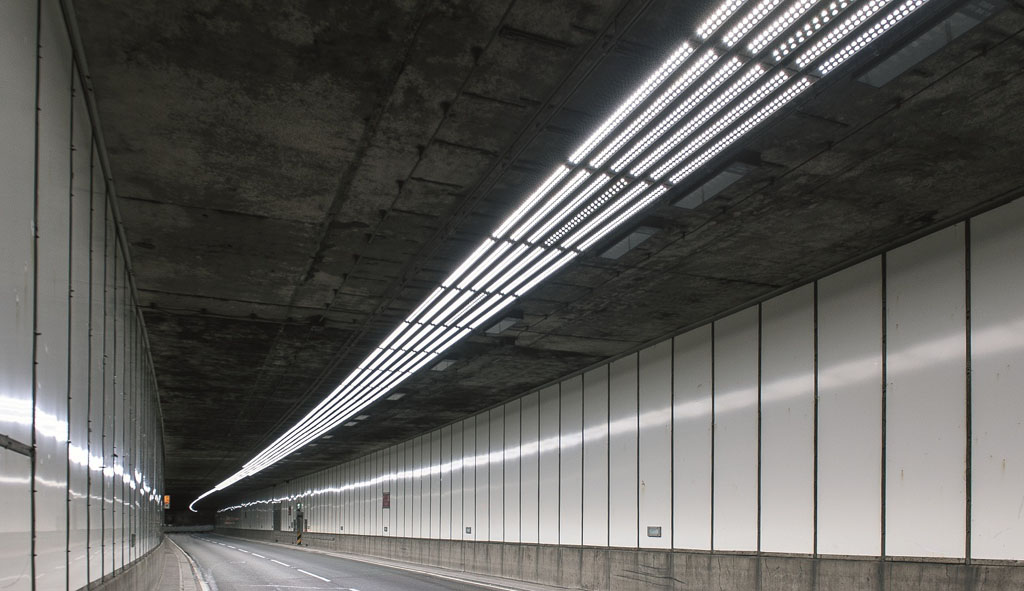Aug/15
12
Light at the end of the tunnel (and slightly dimmer light in the middle)
· Posted by admin in LED, Philips LED
Until recently, this tunnel in Stoke-on-Trent, England, had to be regularly closed to change failed lamps, causing disruption to drivers.
Now, those old fluorescent and high-pressure sodium lamps have been replaced by over 600 linear LED luminaires, arranged in unbroken lines. It looks way better, and the lights should last about 10 times as long as the old ones – 20 years instead of two.
The new lights, supplied by Philips, will also use significantly less energy.
To help drivers adjust their vision when entering and leaving the 284-metre tunnel, the lights near the ends are brighter than the ones in the middle, providing 156 cd/m² of light near the exits and >2.0 cd/m² (dimming to >1.5 cd/m² at night) in the middle. They are also dimmed as the day progresses, to match the level of natural light or streetlighting outside the tunnel.
I have reduced my overall maintenance costs, saved a substantial amount of money in energy costs, reduced the carbon footprint and reduced the risks for the operatives’Paul Diamond, Amey
With a projected life of 20 years, the energy savings and reduced maintenance costs are expected to generate around £850,000 ($1.3 million) of savings.
The work was done by engineering services firm SPIE for Amey, the principal contractor for the Highways Agency. Paul Diamond, tunnel manager for Amey, said that since the installation of the new LED lighting, ‘I have reduced my overall maintenance costs, saved a substantial amount of money in energy costs, reduced the carbon footprint and reduced the risks for the operatives.’
The new system complies with the updated standard BS 5489:2 2008 and is designed to provide better uniformity and colour rendering than the old scheme. Because the lights are in an unbroken linear arrangement, any failures (which are unlikely in any case because of the long life of LED lights) would have little effect on the overall scheme. A point-source installation, on the other hand, can easily fall below minimum lighting levels if just one or two lamps fail.
And because the new system uses LEDs, the lights can also be instantly turned back on after a power failure (unlike high-pressure sodium which needed time to cool down first), are fully dimmable, and work well in low temperatures.
The result of the upgrade project is that the annual energy consumption of the tunnel lighting has been reduced from 660 MWh to 154 MWh, a saving on energy costs of nearly £64,000 ($100,000). The tunnel will also save around £28,000 ($44,000) on maintenance, so the total annual savings will be around £92,000 ($144,000). The predicted savings over the expected 20-year life of the installation are predicted to be nearly £850,000 ($1.3 million).
Novel Energy Lighting supplies the full range of Philips professional, specification, and trade LED products. Contact us to discuss your project needs today: T: 0208-540-8287, E: sales@novelenergylighting.com
amey · energy efficiency · energy saving lighting · highway lighting · led lighting · Novel Energy Lighting · philips led · philips linear led · street lighting · tunnel lighting
Comments are closed.
<< Osram safeguards LED road luminaires with high overvoltage protection



